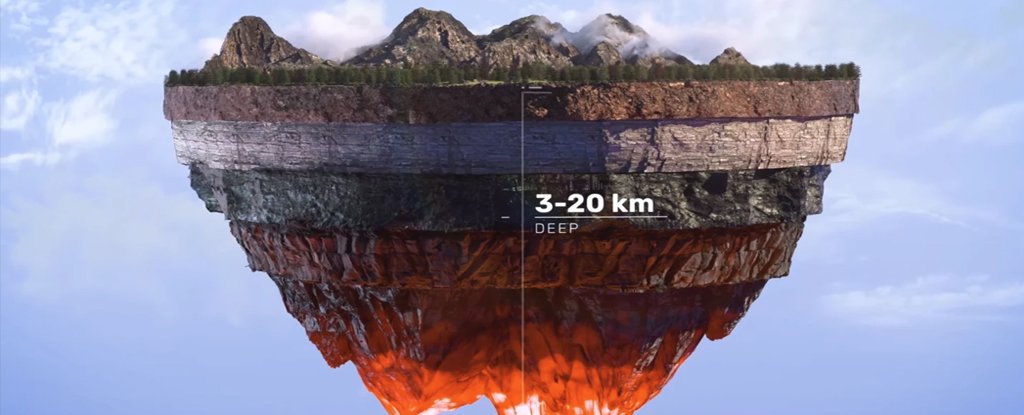Products You May Like
Since its launch in 2020, a pioneering energy company called Quaise has attracted some serious attention for its audacious goal of diving further into Earth’s crust than anybody has dug before.
Following the closure of first round venture capital funding, the MIT spin-off has now raised a total of US$63 million: a respectable start that could potentially make geothermal power accessible to more populations around the world.
The company’s vision for getting closer to the center of the Earth is to combine conventional drilling methods with a megawatt-power flashlight inspired by the kind of technology that could one day make nuclear fusion energy possible.
Geothermal energy has become the forgotten renewable. With solar and wind increasingly dominating the market of green energy, efforts to tap the vast reservoir of heat deep beneath our feet remain stubbornly well behind.
It’s not hard to understand why. Despite being a perfectly good choice of clean, uninterrupted, limitless power, there are very few places where hot rocks suitable for geothermal energy extraction sit conveniently close to the surface.
Quaise aims to change that by developing technology that will allow us to bake holes in the crust to record depths.
To date our best efforts at chewing our way through the planet’s skin have bottomed out at around 12.3 kilometers (7.6 miles). While the Kola Superdeep Borehole and others like it may have reached their limit, though, they nonetheless represent amazing feats of engineering.
To push further, we’d need to find ways to grind away at material squeezed by dozens of kilometers of overhead rock, and then cart it back up to the surface.
Digging tools would also need to still be able to grind rock at temperatures exceeding 180 degrees Celsius (356 degrees Fahrenheit). Turning the drill bits over such a long distance would also need some clever thinking.
One potential alternative to the above obstacles is to drill less – and burn more.
Born out of nuclear fusion research at MIT Plasma Science and Fusion Center, Quaise’s solution is to use millimeter long waves of electromagnetic radiation that force atoms to melt together.
Devices called gyrotrons can efficiently churn out continuous beams of electromagnetic radiation by shaking electrons at high speed inside powerful magnetic fields.
By hooking a megawatt-power gyrotron up to the latest in cutting tools, Quaise expects to be able to blaze its way through the toughest, hottest rock, down to depths of around 20 kilometers (12.4 miles) in a matter of months.
At these depths, the heat of the surrounding rock can hit temperatures of around 500 degrees Celsius – enough to transform any liquid water pumped down there into a vapor-like supercritical state that’s perfect for generating electricity.
Using its seed and investment funding, Quaise anticipates having field-deployable devices providing proof-of-concept operations within the next two years. If all goes well, it could have a working system producing power by 2026.
By 2028, the company hopes to be able to take over old coal-fueled power stations, transforming them into facilities powered by steam instead.
It’s a technology at once so old and yet so novel, we’re bound to have plenty of questions on how, and whether, it might ever succeed. Lucky for us, Loz Blain over at New Atlas has listed a bunch of them for Quaise’s CEO and co-founder, Carlos Araque, to answer.
Even without this technology, roughly 8.3 percent of the world’s energy could come from a geothermal source, supplying around 17 percent of the world’s population. Close to 40 nations could rely completely on geothermal energy right now.
Yet currently, less than half a percent of the world’s electricity is provided by the heat beneath our feet. To remain on track for net zero emissions by 2050, geothermal energy should be growing at around 13 percent each year. Right now, its expansion is a mere fraction of that.
That leaves a lot of room to grow, even if we don’t find a way to expand its reach. Whether companies like Quaise will help invigorate interest this underdog is left to be seen.
What’s certain though is that time to cut emissions and cap global warming to something less catastrophic is rapidly shrinking. We’re hitting rock bottom, so maybe it’s time for us to dig a little deeper.
